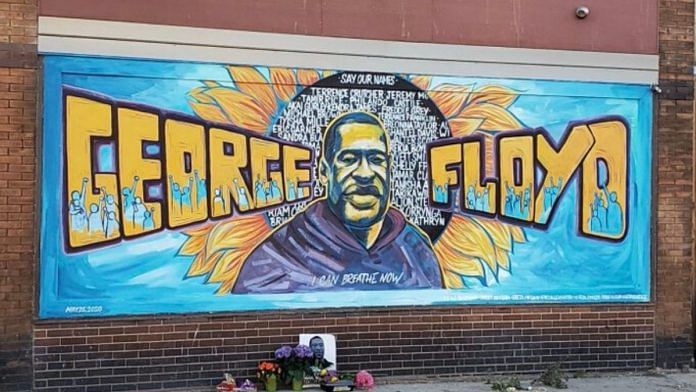The year: 1964. The location: the Oval Office.
President Lyndon Johnson, an improbable advocate for civil rights, was meeting with Governor George Wallace, an implacable foe of civil rights. Wallace had requested the meeting. The specific topic was voting rights and the ongoing demonstrations on their behalf. He wanted the president to help stop them.
After a little small talk, the governor began the conversation by alleging that many of the “malcontents” had been “trained in Moscow.” Johnson responded that all the protesters wanted was the right to vote. He added that “you can’t stop a fever by putting an icepack on your head. You’ve got to use antibiotics and get to the cause of the fever.”
Wallace was disdainful. He said that it was impossible to “deal with street revolutionaries,” who could never be satisfied. You might give them the right to vote, but “then it’s jobs; then it’s distribution of wealth without work.”
Increasingly frustrated, Johnson asked Wallace to think about the verdict of history, not about the current moment. He asked:
George, what do you want left behind? Do you want a great big marble monument that says ‘George Wallace: He Built’? Or do you want a little piece of scrawny pine lying there along that hot caliche soil that says ‘George Wallace: He Hated’?
Wallace was shaken. Later he said to an aide, “Hell, if I’d stayed in there much longer, he’d have had me coming out for civil rights.”
Johnson’s key distinction — between the builders and the haters — is keenly relevant today, of course. Most important, it captures the split between those who are working for racial justice, including voting rights (and jobs), and the modern-day Wallaces, who in various forms are complaining of “street revolutionaries,” doubting the patriotism of the protesters, and emphasizing looting and acts of violence, as if they are all that matter.
Looting and acts of violence are crimes, and they should be deterred and punished; but they are not all that matter. The cause of the fever matters even more.
At the same time, Johnson’s words can be taken to speak to the protesters themselves — even in a literal sense.
It is right to take down statues and monuments celebrating leaders of the Confederacy. It is a good moment to reconsider whom and what we are honoring. But moral time-travel is perilous, and it’s important to make distinctions.
The cause of justice would not be much helped by tearing down statutes of leaders like Washington, Jefferson and Grant, who did not see things as we do, or even had beliefs, and engaged in actions, that are abhorrent by modern standards.
There’s too much hate out there — a hunger for destruction. If the goal is to promote hope and to inspire change, it would be far better to build. There’s a place for taking down, but let’s also lift up.
After a struggle of 15 years, builders managed to create a national holiday celebrating Martin Luther King Jr. (in the face of a filibuster from Republican Senator Jesse Helms of North Carolina). The holiday has become a defining part of our nation’s self-understanding.
We need much more building. To mark the end of slavery, Juneteenth should probably be made a national holiday.
Have you ever paused and taken a deep breath on May 17? That’s the day in 1954 that the Supreme Court ruled, in Brown v. Board of Education, that racial segregation is a violation of the U.S. Constitution. The nation should find a way to commemorate that day.
There is a strong argument for erecting new statues and memorials to those who worked on behalf of the nation’s highest ideals, including Frederick Douglass, Rosa Parks and, above all, Thurgood Marshall, the greatest civil-rights lawyer in U.S. history. How about a statue of Marshall in the U.S. Capitol?
American history has a lot of unknown heroes — people whose names are unfamiliar or whose stories have been largely lost. Let’s recover them. Whether or not they deserve statues, they deserve recognition and celebration, perhaps at the state and local levels.
To be sure, symbols are not substitutes for reforms in economic and social policy or in law enforcement. But as Oliver Wendell Holmes Jr. wrote, “We live by symbols.”
Holidays, statues and monuments help define a nation and its aspirations; they inspire action. New statues and monuments can unify a diverse people and elevate the human spirit.
By all means, we should be taking down some of the old ones. But as Johnson told Wallace, it’s important to build — and to leave something behind.- Bloomberg
Also read: Four ways to be an ally in the fight against racism




while it is nice to discuss about brutality abroad, it is shocking that the print has not covered the police brutality in tamil nadu. is it because a non bjp govt. is in power there?